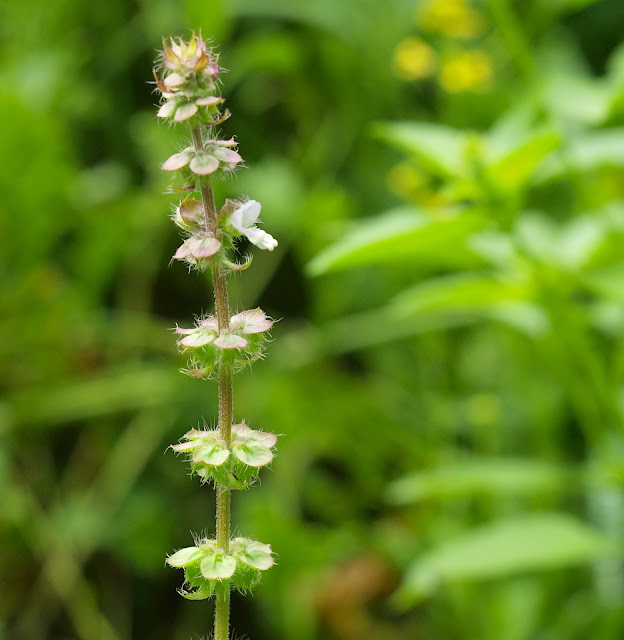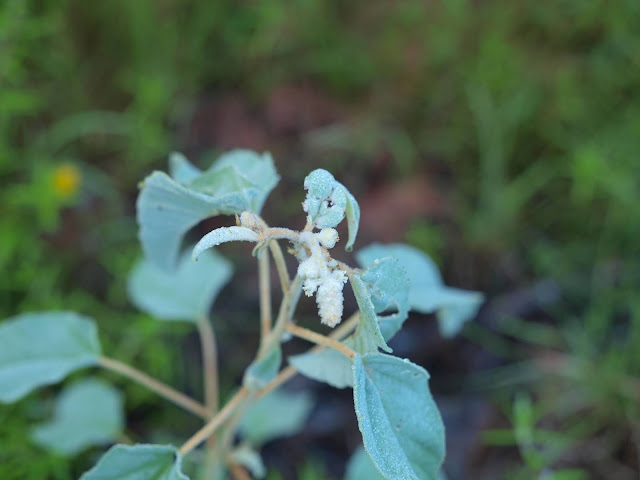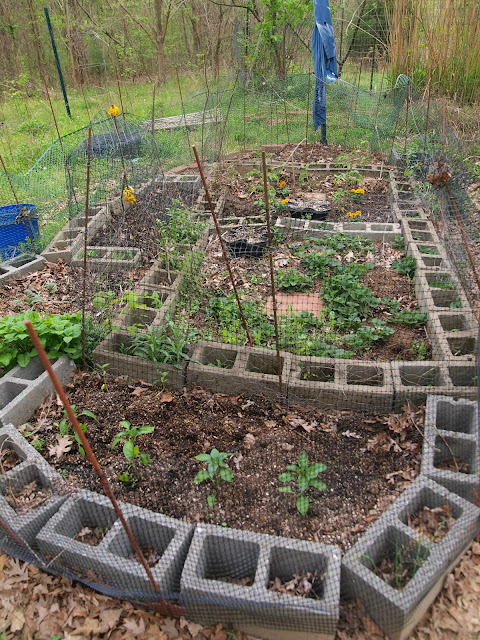Onions, honey and seeds for birds
We took a trip out to the Homestead Garden and Gifts today to buy some of the local honey. Homestead is located in Springville, TN, on East Antioch Road. They are a greenhouse and gift shop. They had a lot of local fruits and vegetables, and this one yellow onion was so large we had to grab one to fry up for lunch one day. Yellow onions fried in butter are one of Esme's favorite things. I used to beg my father to make them for me when I was very small. We like to eat them with eggs, chicken rice or chicken sandwiches!
A friend pointed out that honey and onions are great for cold and sinuses. Definitely right! I have been using a little honey in my tea almost every night. I finally received my yellow onion seed, as well. I'm thinking of planting it in the raised bed sometime this month to overwinter. The bunching white onions have done so well in pots this year that I would really like to see if we can grow these, too.
lemon basil seed stalk
I got some close up pictures of lemon basil and the pigweed out in the yard. The pigweed has been attracting the blue grosbeaks, which I have NOT been able to get a picture of yet. We have all been watching the little blue bird drop down out of the trees and pull seeds out of each plant, clinging to the small plants upside-down and making the entire clump of plants shake and shiver. I weedeated most of the side yard, but left those plants specifically for the blue bird, because Mark had said he saw him in there one day.
pigweed seed stalk
The pigweed is in the amaranth family, grains native to North America. There are several types of pigweed, also called lambsquarters, and they were used for food in several different ways by tribes and early settlers.
The cucumbers have started to produce so much that it is a little scary to get out there among them. I might have to make sweet relish again!
Almanac bits:
It was 64 degrees at about 6:30 this morning
The sun began to set between 7:30 and 8 at night, with a spectacular sunset - it looked like an eye over the horizon with the clouds all behind and around the glowing golden disc. Golden hour was short, but beautiful. The red sumac leaves began to glow in the woods near the bus stop, so much that I walked the dogs up on the hill to see if it was a flower hidden in the grass.
I would like to look for the nuts on the hop hornbeam tree - but I have to think of it when I'm out there.
The whipporwill cowpeas planted with the corn in March have struggled all this time and are just now beginning to look like they might flower. The other two beans that have survived have begun to flower, but only a few here and there. I have planted many varieties this year in an effort to get something to survive being eaten by bugs or rabbits... a few have made it climbing up inside the raised bed, and this is one of them.
perhaps a Cherokee Trail of tears bean
The lespedeza sericea is just beginning to blossom with tiny white flowers, but won't be really visible for another few days.
The thistles are mostly six feet tall and beginning to form heads. This year, some of the thistles have been attacked by a tiny sort of bagworm, leaving their leaves dying in little white threads. However, not all of the thistles have been attacked.
The scarlet runner bean is well over eleven feet tall and I have begun to harvest some pods for drying.
The Cherokee White Eagle corn produced two ears, and they are in the drying room. As they began to dry (I saved them earlier last week) some of the white kernels have begun to turn purple.
Friends, Discoveries and Goals
I spoke with my friend this morning, who has an allotment in the United Kingdom, called Narnia. She was telling me about her giant yellow knapweed (Centaurea macrocelphala). It was not something she planted (much like our primrose), and she kept taking pictures of the 'mystery plant' until it revealed itself. We had both expected it to bloom purple, like a thistle, but when it bloomed bright yellow she was able to finally identify it. She also has cat's ears (the tiny false dandelion we posted about) in her garden, but they are a slightly different variety. The knapweed is actually much closer related to the bachelor's button or 'blue cornflower' (Centaurea cyanus) than the thistle! They are both Centaurea family, although they look so different. The thistle is Asteraceae family, which happens to be closer related to the cat's ear. How crazy, and fascinating.
I was out on the postal route last Saturday and I saw some tiny pinky-fingernail sized blue cornflowers growing by a mailbox. It is on my list of things to do to find one and get a picture some time soon, along with the hop hornbeam nuts.
I had meant to get pictures of the pink mallow-like relative over on Daffodil Hill and the coreopsis, but I forgot the camera card that day and came back with no pictures at all. And now, today, I see that the mallow is no longer blooming. I know it is still there - it might still be worth taking another tromp out there. I should really invest in a pair of 'Wellies' as Johanna and the crew from the mom's board would call them. I haven't had a pair of rubber boots in so long, but they might be helpful with all the rain we have sometimes.









Comments
Post a Comment